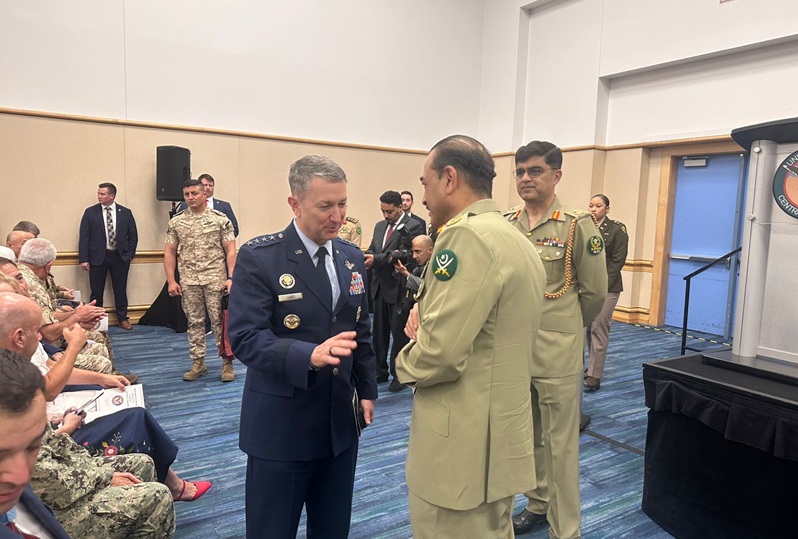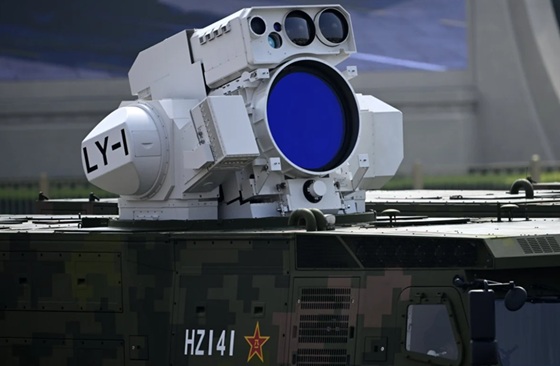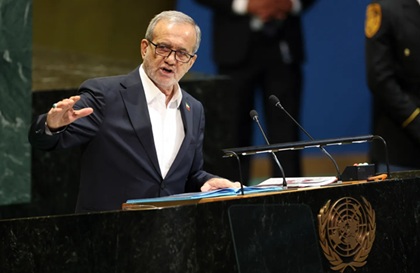In the wake of the May 2025 conflict, Pakistan has emerged as a focal point of global military diplomacy, hosting a flurry of high-profile delegations and securing strategic defence engagements that signal its growing influence. The four-day clash, triggered by Pakistan’s Operation Bunyan-um-Marsoos in response to regional tensions, showcased its military resilience and diplomatic acumen. Since the U.S.-brokered ceasefire on May 10, 2025, Islamabad has capitalized on its strategic positioning, leveraging the conflict to strengthen alliances, modernize its arsenal, and project power across the Islamic world and beyond.
This article delves into the key defence-related engagements, high-profile visits to Islamabad, and the broader implications for Pakistan’s rising defence clout.
A Surge in Military Diplomacy
Since May 2025, Pakistan has hosted over a dozen military delegations, with Islamabad becoming a hub for strategic dialogues on counter-terrorism, air defence upgrades, and regional stability. These engagements reflect Pakistan’s proactive efforts to address vulnerabilities exposed during the conflict, particularly in air defence and missile systems, while forging new partnerships to counterbalance regional dynamics.
Key Engagements and Visits
1. Turkey’s Solidarity Mission (Late May 2025)
A high-level Turkish delegation, including Foreign and Defence Ministers, visited Islamabad to meet Prime Minister Shehbaz Sharif and Chief of Air Staff Air Chief Marshal Zaheer Ahmed Baber Sidhu. The talks focused on joint aviation and drone projects, as well as energy cooperation in oil and gas exploration. Turkey, a long-standing ally, pledged support for Pakistan’s air defence capabilities, reinforcing Ankara’s role as a key partner in defence technology and regional security.
2. Chinese Strategic Reinforcement (July and August 2025)
In July, Lieutenant General Wang Gang, Chief of the PLA Air Force, visited Pakistan to evaluate the performance of Chinese-supplied systems like the HQ-9 air defence system and PL-15 missiles. The visit spurred accelerated technology transfers. In August, Chinese Foreign Minister Wang Yi led the Pakistan-China Strategic Dialogue in Islamabad, meeting Field Marshal Asim Munir and PM Sharif. The discussions solidified the “all-weather” partnership, focusing on CPEC security, regional stability, and preparations for Sharif’s visit to the SCO Summit in China. Additionally, President Asif Ali Zardari’s September visit to China’s AVIC military hub deepened ties, with a focus on J-10 upgrades and drone technology.
3. Sudanese Mega-Deal (August 17-20, 2025)
A Sudanese Armed Forces delegation, led by Lieutenant General Al-Tahir Mohammed, signed a landmark $1.5 billion defence agreement during a visit to Islamabad. The deal included 10 K-8 trainer aircraft, over 20 Shahpar-II UAVs, 150+ YIHA-III/MR-10K/Ababeel-5 drones, MiG-21 engines, 150 Mohafiz vehicles, and HQ-9/HQ-6 air defence systems. Financed by a third party, likely a Gulf ally, this pact underscores Pakistan’s growing role as a defence exporter, particularly in the African market.
4. Bangladesh’s Military Reset (August 22-24, 2025)
A Bangladesh Army delegation, led by Lieutenant General Faizur Rahman, visited Pakistan’s Inter-Services Public Relations (ISPR) and military headquarters. The talks focused on joint training, counter-insurgency cooperation, and reviving defence ties strained since 1971. This visit coincided with Deputy Prime Minister Ishaq Dar’s trip to Dhaka, signaling a broader reset in bilateral relations under Bangladesh’s interim government.
5. U.S. and Central Asian Engagement (August 2025)
The U.S.-Pakistan defence relationship saw a revival with the Chiefs of Defence Staff (CHOD) Conference hosted in Islamabad, attended by representatives from Kazakhstan, Kyrgyzstan, Uzbekistan, and Tajikistan. The multilateral talks emphasized counter-terrorism and regional stability. This followed Air Chief Marshal Sidhu’s July visit to Washington, where he sought AIM-120D missiles for Pakistan’s F-16 fleet to diversify from Chinese systems. A U.S. delegation reciprocated in August for joint air exercises, marking a thaw in ties.
6. Gulf Security Pacts (September 2025)
Bahrain’s National Guard Commander met Pakistan’s Chairman Joint Chiefs of Staff Committee (CJCSC) and Air Chief in Islamabad, discussing a Gulf-Pakistan security pact, joint naval drills, and arms co-production. Saudi Arabia is also expected to deploy units for “mutual defence” exercises, building on Pakistan’s role as a security guarantor in the Gulf. Additionally, Egypt’s Military Production Minister, through ambassadorial channels, explored co-manufacturing small arms and munitions, building on 2024 agreements.
This pact commits both nations to treat any aggression against one as an act against both, encompassing comprehensive military cooperation without explicit mention of nuclear elements, though a senior Saudi official described it as covering “all military means.” The agreement, attended by Saudi Defence Minister Khalid bin Salman and Pakistan’s Field Marshal Asim Munir, deepens decades-long security ties and follows heightened regional tensions, including Israel’s recent strikes on Qatar. It marks the first such military pact between a Gulf Arab state and a nuclear power, enhancing joint deterrence and opening avenues for expanded Pakistani military involvement in Saudi Arabia, including potential training and advisory roles.
Pakistan hosted trilateral talks with China and Afghanistan in August, focusing on counter-terrorism to address threats from groups like the Tehrik-i-Taliban Pakistan (TTP) and Balochistan Liberation Army (BLA). These discussions, coupled with Field Marshal Munir’s July visit to China for the third Hangor-class submarine handover, highlight Pakistan’s efforts to secure its western borders while deepening defence ties.
Strategic Importance of Pakistan’s Engagements
These high-profile visits and agreements are not mere diplomatic formalities; they are pivotal to Pakistan’s post-conflict strategy, addressing operational, geopolitical, and domestic imperatives:
– Technological Modernization: The Sudanese deal and Chinese engagements address critical gaps in Pakistan’s air defence and ISR (intelligence, surveillance, reconnaissance) capabilities. The Shahpar-II and YIHA-III drones enhance counter-insurgency operations, while U.S. missile pursuits reduce reliance on Chinese systems. These upgrades aim to bolster deterrence and complicate adversaries’ escalation strategies.
– Geopolitical Maneuvering: Pakistan has leveraged the conflict to internationalize its strategic priorities, particularly through forums like the SCO and UN Security Council (chaired by Foreign Minister Ishaq Dar in July). Engagements with Turkey, Sudan, and Bangladesh expand Pakistan’s Islamic and regional alliances, countering rival blocs. Gulf partnerships, including with Bahrain and Saudi Arabia, provide economic lifelines amid IMF pressures, with defence cooperation doubling as a financial stabilizer.
– Domestic Consolidation: The conflict boosted the military’s domestic standing, reflected in a 20%+ defence budget hike and Munir’s promotion to Field Marshal. High-profile visits reinforce this narrative of strength, deterring internal dissent and rallying public support through displays of global solidarity.
– Regional Influence: By hosting Central Asian and U.S. delegations, Pakistan positions itself as a linchpin in regional stability. The trilateral talks with Afghanistan and China underscore its role in counter-terrorism, while Gulf engagements cement its status as a security partner in the Middle East.
Pakistan’s Rising Defence Clout
The May 2025 conflict, despite its challenges, has paradoxically elevated Pakistan’s global defence profile. Islamabad’s narrative of resilience—downing advanced aircraft and forcing a ceasefire—has resonated domestically and internationally. Key indicators of Pakistan’s growing clout include:
– Defence Exports and Partnerships: The $1.5 billion Sudanese deal positions Pakistan as a competitive player in the global arms market, particularly for drones and air defence systems. Co-production with Turkey (YIHA-III drones) and potential Gulf partnerships further enhance its industrial base.
– Diplomatic Leverage: Pakistan’s ability to secure U.S. mediation and host multilateral forums like the CHOD Conference signals a return to pre-2019 influence levels. The SCO Summit and UNSC engagements have amplified its voice on global platforms.
– Military Modernization: Investments in drones, loitering munitions, and information operations reflect a doctrinal shift toward asymmetric warfare. These capabilities, combined with diversified arms sourcing (U.S., China, Turkey), strengthen Pakistan’s deterrence posture.
– Islamic World Leadership: Engagements with Sudan, Bangladesh, Bahrain, and Saudi Arabia reinforce Pakistan’s role as a defence hub for Muslim-majority nations. The revival of ties with Bangladesh, in particular, marks a historic shift, opening new avenues for cooperation.
Challenges and Future Prospects
Despite these gains, Pakistan faces hurdles. Economic fragility, with a $7 billion IMF bailout and looming debt repayments, limits the sustainability of its defence ambitions. Moreover, internal security threats from TTP and BLA require sustained focus, diverting resources from external projection. Looking ahead, Pakistan’s defence clout will hinge on its ability to balance these challenges with its diplomatic momentum. The upcoming Saudi exercises and potential expansion of Sudanese-style deals could solidify its role as a regional arms supplier. Continued Chinese investment, coupled with selective Western engagement, will drive modernization, while Gulf economic support could alleviate fiscal pressures. By sustaining this multifaceted strategy, Pakistan is poised to cement its status as a pivotal player in global defence dynamics.
In conclusion, Pakistan’s post-May 2025 engagements reflect a calculated bid to transform battlefield challenges into strategic opportunities. From Turkish drones to Sudanese arms deals and U.S. missile pursuits, Islamabad is weaving a web of alliances that amplifies its defence clout. As it navigates economic and security headwinds, Pakistan’s ability to sustain this momentum will shape its trajectory as a regional powerhouse, proving that even in conflict, opportunity can forge a new path forward.
Discover more from Defence Talks | Defense News Hub, Military Updates, Security Insights
Subscribe to get the latest posts sent to your email.





